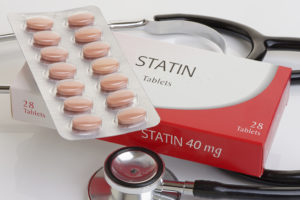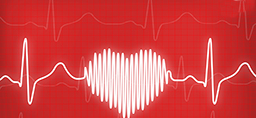
Too few Americans who need them—especially young adults—are getting cholesterol-lowering statin medications, a new study suggests.
The study of nearly 3 million adults found that more than half of younger patients under 40 with too-high blood levels of LDL “bad” cholesterol are getting statins as recommended.
“This article clearly articulates the under-usage of statins in young people with severe elevations of LDL cholesterol,” said heart specialist Dr. Carl Reimers.
Reimers is associate chair of cardiovascular medicine at Lenox Hill Hospital in New York City. He reviewed the new findings but wasn’t involved in the research.
Reimers said that younger patients often show early signs of heart trouble linked to cholesterol, but too often aren’t treated with statins. That’s a shame, he said, because “it is well-established that treating these patients with statins prevents cardiovascular events versus not treating these patients.”
The new study was led by Dr. David Zidar, of University Hospitals Cleveland Medical Center. His team noted that statins are currently recommended for all adults—age 21 years and older—who have LDL blood cholesterol levels of 190 milligrams per deciliter (mg/dL) or higher.
But are patients getting statins as they should? In the study, Zidar and his colleagues tracked rates of statin prescriptions in people screened for dyslipidemia—abnormally high cholesterol.
The team examined data on inpatient and outpatient visits that occurred over a three-year period at 360 medical centers across the country. All patients were between the ages of 20 and 75.
Overall, nearly 2.9 million people were included in the study. Close to 4 percent of them had an LDL cholesterol level that met or exceeded the 190 mg/dL threshold for statin use.
However, a third of patients with “severe” high cholesterol (but without any diagnosis of heart disease or diabetes) didn’t get a statin, Zidar’s team reported.
And about one in every four people with even more severe LDL cholesterol levels (greater than 250 mg/dL) wasn’t given a statin that might help bring those levels down, the study found.
The younger the patient, the less likely he or she was to get a statin when their cholesterol levels rose too high. For example, when needed, the drugs were only prescribed for nearly a third of patients in their 30s, 47 percent of those in their 40s, and 61 percent of patients in their 50s.
Zidar’s team believes that “specific interventions” are needed to track younger patients after their cholesterol tests, to help make sure they get the treatments they need.
Reimers agreed and said that too often, patients aren’t given a statin after an initial visit to their family doctor.
“Many general internists are reluctant still to prescribe statins,” he said. “Cardiologists are far more likely to prescribe statins. But unfortunately, most patients will not be referred to cardiologists until after they have been diagnosed with cardiovascular disease.”
Dr. David Friedman is chief of heart failure services at Northwell Health Long Island Jewish Valley Stream Hospital in Valley Stream, N.Y. He stressed that for younger people with high cholesterol, statins are only part of the solution.
“Young adults need to be instructed to have motivation at better therapeutic lifestyle choices, with proper weight management, regular aerobic physical fitness” and heart-healthy diets, Friedman said.
The use of a statin can also be advised on a “case by case” basis, he said.
Overall, Friedman said, “we need to be more proactive with earlier statin use—as long as long-term benefits are not outweighed by potential but lower-level statin-related risks.”
According to the U.S. Food and Drug Administration, potential risks from statin medications are very rare, but could include muscle ailments, raised blood sugar, cognitive deficits and liver damage.
The new findings were published online in JAMA Cardiology.
 /a>
/a>
 /a>
/a>
 /a>
/a>